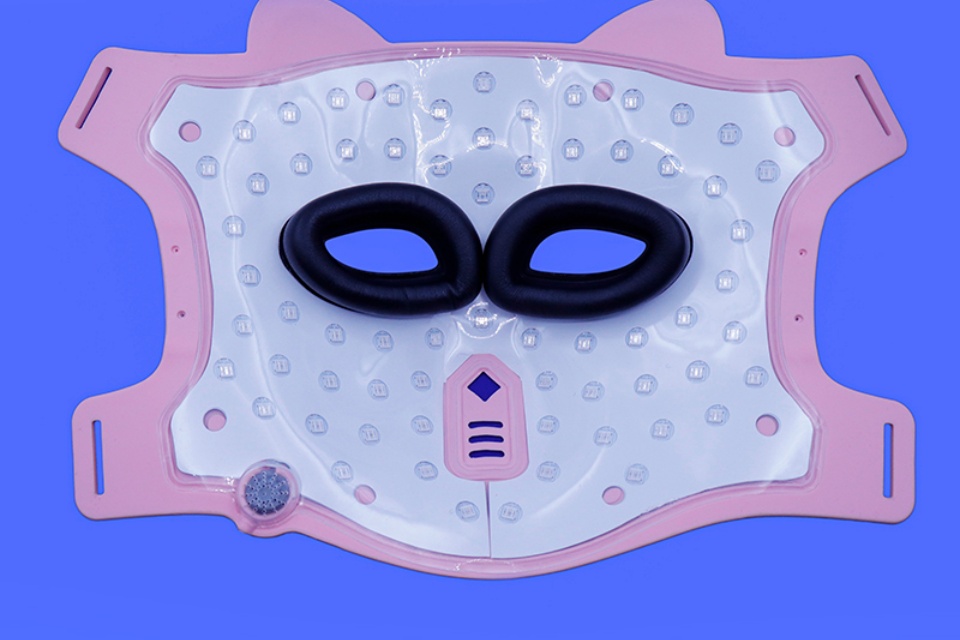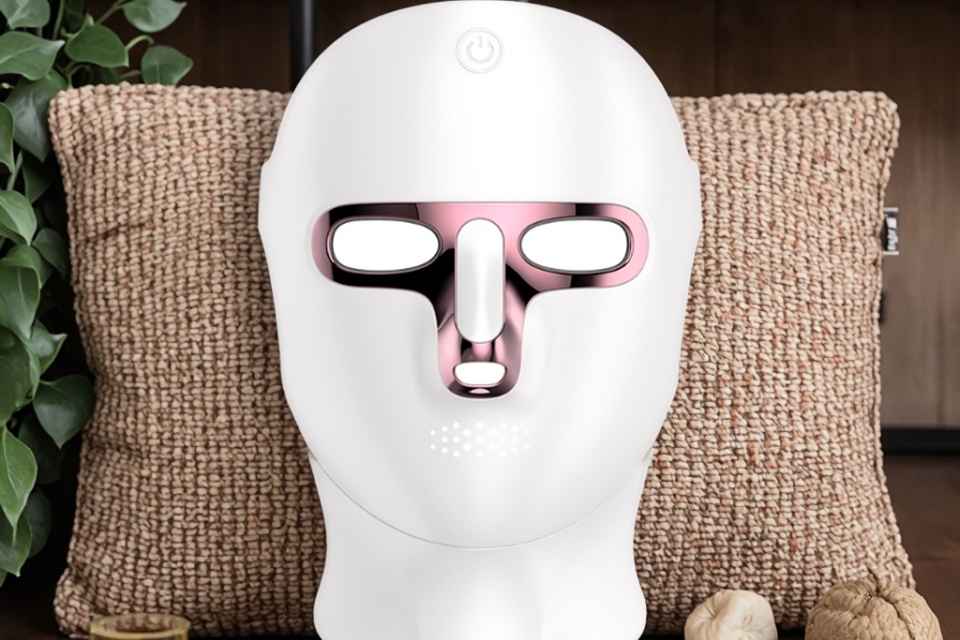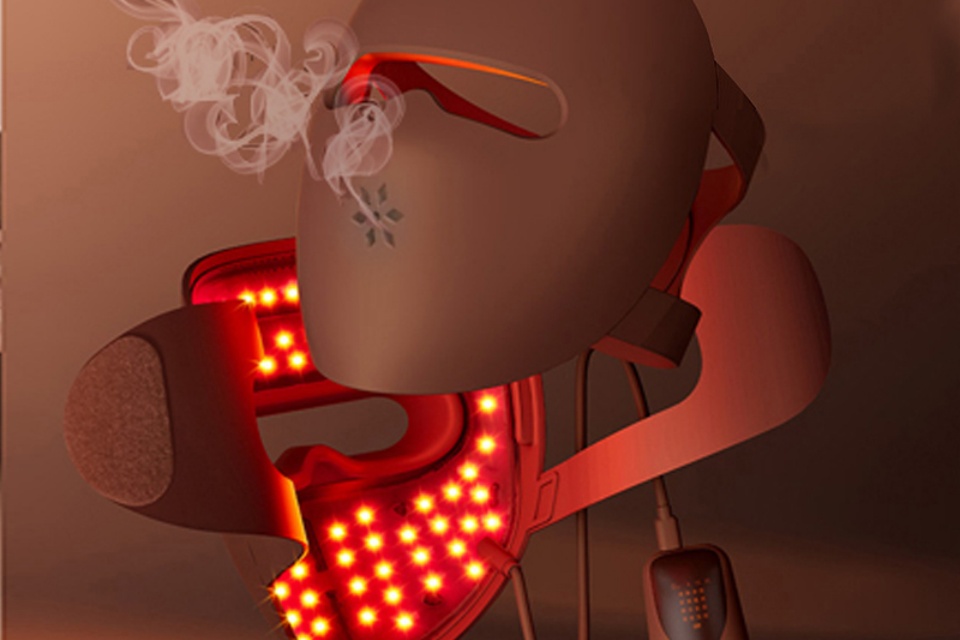Wireless LED body masks skin tightening at home
Summary
Wireless LED body masks are innovative skincare devices designed for at-home use, employing advanced LED light therapy to promote skin tightening and rejuvenation. By utilizing specific wavelengths of light, such as red and blue, these masks stimulate cellular processes like collagen production and inflammation reduction, targeting a range of skin concerns from acne to signs of aging. As consumer interest in non-invasive beauty treatments rises, these masks have gained popularity for their convenience and effectiveness, allowing individuals to integrate professional-grade skincare into their daily routines.
The integration of smart technology enhances the functionality of wireless LED masks, enabling users to connect to mobile applications that monitor skin conditions and provide personalized treatment recommendations. This user-centric approach not only improves the experience but also encourages consistent skincare practices tailored to individual needs. Furthermore, the lightweight and adjustable designs of these masks contribute to their appeal, as they prioritize comfort and ease of use, making LED therapy accessible for various skin types and concerns.
Despite their popularity, the effectiveness of wireless LED body masks remains a topic of ongoing debate within the dermatological community. While some studies indicate that red light therapy can yield positive results for skin rejuvenation and acne treatment, the overall efficacy of at-home devices is not yet conclusively established. Factors such as treatment duration and irradiance levels play a critical role in determining outcomes, and many experts call for more rigorous clinical research to substantiate the claims surrounding these products. Concerns about safety, including the potential for skin damage and the varying power levels compared to professional treatments, further complicate the narrative surrounding their use.
As the market for at-home beauty devices continues to expand, driven by social media influence and consumer demand for effective skincare solutions, the regulatory landscape becomes increasingly significant. While some wireless LED masks have received FDA clearance, there remains a distinction between registered and approved devices, emphasizing the importance of consumer education regarding safety and efficacy. Ultimately, as interest in these innovative skincare solutions grows, prospective users are encouraged to consult healthcare providers to ensure informed decisions about their skincare regimens.
Technology
LED Light Therapy in Wireless Body Masks
Wireless LED body masks utilize advanced LED light therapy to enhance skin rejuvenation and tightening. This non-invasive treatment leverages specific wavelengths of light emitted by LEDs, which penetrate the skin at various depths to stimulate cellular processes such as collagen production and inflammation reduction. By using a combination of red (633 nm), blue (415 nm), and other light wavelengths, these masks target a range of skin issues, from acne to signs of aging.
Integration of Smart Technology
The latest wireless LED masks incorporate smart technology, allowing users to connect the device to mobile applications. These apps can monitor skin conditions, provide personalized treatment recommendations, and track progress over time. This integration of technology not only enhances the user experience but also promotes consistent skincare routines tailored to individual needs.
User-Centric Design
The design of wireless LED masks emphasizes user comfort and convenience. They are often lightweight, portable, and equipped with adjustable settings for different treatment intensities and durations. This accessibility allows users to incorporate LED therapy into their daily skincare routines easily, regardless of their skin type or specific concerns.
Market Dynamics
The growth of the wireless LED body mask market is supported by established brands and innovative newcomers that prioritize technological advancements and user-centric features. Companies are investing significantly in research and development to create devices that not only meet but exceed consumer expectations for efficacy and usability.
Mechanism of Action
Wireless LED body masks utilize low-level light therapy (LLLT), which is based on the principles of photobiomodulation. This process triggers a cascade of cellular responses when low-energy lasers or light are applied to the skin, ultimately leading to various therapeutic effects. The efficacy of LLLT is governed by the Arndt–Schultz law, which states that cellular responses to light can vary significantly based on the irradiance (mW/cm²) or radiant exposure (J/cm²) levels. Specifically, light stimulus must be delivered at optimal doses to be effective; doses that are too low fail to activate cellular functions, while those that are too high can inhibit desired responses or lead to adverse effects, such as excessive heating of the tissue.
The wavelengths used in these masks, including red (633 nm) and near-infrared (830 nm), are absorbed by specific cellular components, particularly the mitochondria. This absorption enhances the production of adenosine triphosphate (ATP), which fuels cellular activities such as skin repair, collagen synthesis, and increased circulation.
Collagen, a crucial protein for skin firmness and elasticity, is synthesized in response to the stimulation from these light wavelengths, which can help diminish the appearance of fine lines and wrinkles. Furthermore, different wavelengths penetrate various skin layers, facilitating targeted treatment of specific conditions. For instance, red light primarily affects the epidermis, stimulating collagen production, while blue light is often used for its acne-fighting properties, rejuvenating the skin and reducing inflammation. The comprehensive treatment offered by these devices, which often combine multiple light wavelengths, addresses various skin concerns, including aging, pigmentation, and acne.
Usage
Overview of Wireless LED Body Masks
Wireless LED body masks have emerged as a popular choice for at-home skin tightening and rejuvenation treatments. These devices utilize specific wavelengths of light to promote various skin benefits, including improved texture, reduced fine lines, and enhanced elasticity. The convenience of wireless operation allows users to incorporate these treatments into their daily routines without the constraints of cords or limited mobility.
Key Factors Influencing Usage
Convenience and Comfort The rising consumer demand for convenience has significantly influenced the adoption of wireless LED body masks. These devices are designed to be user-friendly, with intuitive controls and comfortable designs that enhance the overall experience. Users often prefer masks that fit securely and remain in place during treatment, while also being pleasant to wear for extended periods. Effective design features, such as adjustable straps and eye shields, can improve comfort and usability.
Efficacy and Benefits The perceived benefits of using wireless LED masks are substantial, as users often report visible improvements in skin appearance following consistent use. Research indicates that these devices can effectively deliver therapeutic light energy to stimulate collagen production and reduce signs of aging, making them a valuable addition to personal skincare regimens. The effectiveness of treatment is closely tied to factors such as irradiance levels and the specific wavelengths employed, with certain combinations being more beneficial for skin rejuvenation than others.
Social Media Influence The rise of social media beauty trends and the influence of beauty influencers have contributed to the growing interest in wireless LED body masks. Platforms like Instagram and TikTok showcase personal testimonials and demonstrations, enticing consumers to try these innovative devices for themselves. As awareness of at-home beauty treatments continues to expand, the market for wireless LED masks is anticipated to grow substantially.
Effectiveness
The effectiveness of wireless LED body masks for skin tightening and other dermatological applications remains a topic of ongoing research and debate. Most experts agree that while red light therapy (RLT) shows promise for certain conditions, the overall efficacy of RLT for various claimed uses has not been conclusively established. Current studies suggest that RLT can benefit hair growth and reduce inflammation, but the strength and duration of treatment are crucial factors that remain poorly defined for at-home devices.
Randomized, placebo-controlled trials are considered the gold standard for assessing treatment effectiveness, yet many existing studies on RLT lack this rigor. Patients often report varying degrees of success with at-home LED devices, with results potentially influenced by the lower power levels used in home applications compared to professional treatments. Lower power, applied over a longer duration, is frequently recommended to minimize the risk of skin damage while maximizing treatment outcomes.
Clinical studies have shown some improvements in skin conditions such as photoaging and rosacea when treated with RLT. However, researchers have also pointed out that the observed benefits might be complicated by placebo effects or bias from subjective reporting. For example, a study found no significant objective improvements despite patient-reported benefits in appearance.
Due to safety concerns, at-home LED devices tend to be less potent than those used in dermatology clinics. Consequently, users may need to commit to longer treatment durations to achieve visible results. As the market for at-home beauty devices continues to grow, potential users are encouraged to consult healthcare providers to discuss the appropriateness and safety of RLT for their specific skin conditions. While there is some scientific evidence supporting certain applications of RLT, further studies are required to fully understand its effectiveness and to develop standardized treatment protocols.
Market Availability
The market for wireless LED body masks focused on skin tightening at home has been experiencing significant growth due to the rising consumer demand for convenient and effective skincare solutions. The global At-Home Beauty Devices Market is projected to reach nearly USD 15.81 billion by 2034, reflecting a compound annual growth rate (CAGR) of around 9.67% during this period.
Distribution Channels
Online retail platforms play a crucial role in making these devices accessible to consumers. Major e-commerce sites like Amazon and Flipkart provide a wide array of beauty devices, including wireless LED body masks, directly to customers, thus enhancing the ease of purchase. The availability of these devices through various distribution channels, including retail shops and specialty stores, further contributes to their market penetration.
Consumer Insights and Barriers
Despite the growth potential, several factors hinder broader adoption of wireless LED body masks. One notable barrier is the high cost associated with advanced beauty devices, which positions them as premium products. Many consumers may be hesitant to invest in these devices without guaranteed results, limiting accessibility to budget-conscious demographics. Furthermore, consumer confusion regarding the diverse functionalities and benefits of these products underscores the importance of effective educational initiatives by brands to clarify their value propositions.
Competitive Landscape
The competitive landscape is characterized by both established brands and innovative start-ups striving to capture market share. Notable players in the industry include Panasonic Corporation, YA-MAN Ltd., and L’Oréal S A, which leverage their technological expertise and brand recognition to maintain market dominance. Start-ups are focusing on unique technological advancements and sustainable practices to differentiate themselves, appealing to an eco-conscious consumer base while prioritizing user-friendly designs to enhance the overall customer experience.
Regulatory Status
The regulatory status of wireless LED body masks for skin tightening is crucial for consumers seeking safe and effective skincare solutions. These devices are often marketed under various claims, but it is essential to distinguish between "FDA registered" and "FDA cleared" or "FDA approved.
Safety Standards
The safety of low-level light therapy (LLLT), which includes LED devices, is well-documented across various standards and guidelines. For example, the International Standards Manual states that an exposure of less than 200 mW/cm² is considered safe for skin. Despite the potential risks of LLLT, such as retinal damage and skin burns, preventative measures like safety goggles are recommended when using these devices. Moreover, the FDA has approved marketing and use of therapeutic LLLT within specified guidelines, ensuring that devices utilizing higher irradiance levels are employed safely over larger areas to remain within exposure limits.
FDA Registration and Clearance
FDA registration indicates that a manufacturer has submitted basic information about the device to the Food and Drug Administration (FDA); however, this does not imply that the device has undergone thorough safety and efficacy evaluations. Many manufacturers may hold a letter from the FDA recognizing their LED systems as nonsignificant risk devices (NSRD), which is not equivalent to having received 510(k) approval, a process that requires demonstration of substantial equivalence to a legally marketed device. Without FDA clearance, companies are restricted from making specific claims regarding the safety or effectiveness of their products.
FDA Approval Process
While some LED face masks have been cleared by the FDA for at-home use, it is important to note that as of now, there are no LED masks that have achieved full FDA approval, which requires more extensive testing. Products that are FDA cleared have been found to be similar to existing products on the market and deemed safe for consumer use, which is a common classification for many at-home skincare devices. Consumers are advised to ensure that any LED device they consider is either FDA cleared or approved to mitigate potential risks and enhance the likelihood of achieving desired skin benefits.
 English
English Español
Español Português
Português Pусский
Pусский Français
Français Deutsch
Deutsch 日本語
日本語 한국어
한국어 Italiano
Italiano عربى
عربى


